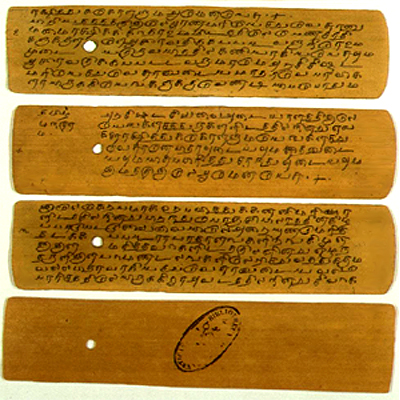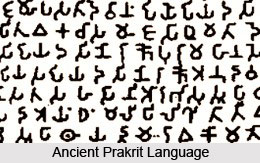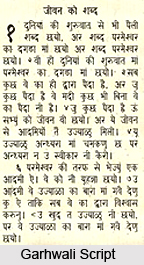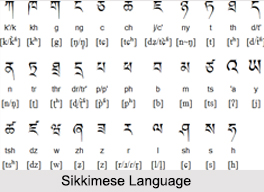Introduction
The Tamil language is a Dravidian language that originates from South Asia and is primarily spoken by the Tamil people. It holds the status of an official language in Tamil Nadu, India, as well as in the sovereign nations of Sri Lanka and Singapore, and the Indian Union territory of Puducherry. Additionally, Tamil is spoken by significant minority populations in the South Indian states of Kerala, Karnataka, Andhra Pradesh, and Telangana, along with the Union Territory of the Andaman and Nicobar Islands. The influence of Tamil extends beyond borders as it is also spoken by the Tamil diaspora residing in numerous countries worldwide. Recognized as one of the 22 scheduled languages in the Constitution of India, Tamil holds the distinction of being the first classical language of India.
Etymology of Tamil Language
While the language developed by the Tamil Sangams is known today as Tamil, the exact point in history when the term "Tamil" began to be used for the language remains uncertain. The origin of the name itself is also debated. One of the earliest known references to the name appears in the Tholkappiyam, a foundational text on Tamil grammar and linguistics, which is believed to date back to around the 2nd century BCE. Around the same period, the Hathigumpha inscription, carved by Kharavela, the Jain monarch of Kalinga circa 150 BCE, mentions a group referred to as Tamira Samghatta, possibly pointing to a Tamil-speaking community.
Additionally, the Samavayanga Sutra, a Jain text from the 3rd century BCE, includes a reference to a script identified as 'Damili', which is thought to be an early form of Tamil script. These early mentions reflect the language's deep historical roots, even as the precise origins of its name remain veiled in antiquity.
Origin of Tamil Language
The origin of Tamil language is deeply rooted in mythology. It is believed that Tamil, or its personified form Tamil Thai (Mother Tamil), was divinely created by Lord Shiva. The revered deity Murugan, considered the patron god of Tamil, along with the sage Agastya, is credited with introducing the language to the people. Linguistically, Tamil is a member of the Dravidian language family and traces its roots back to Proto-Dravidian, a language thought to have been spoken as early as the third millennium BCE.
Historically, Tamil served as a key language for early seafaring traders in southern India. Its reach extended far beyond the subcontinent, with Tamil inscriptions discovered in regions like Indonesia, Thailand, and even Egypt, evidence of its widespread influence. The language boasts an unbroken literary heritage, most notably represented by Sangam literature, an extensive body of over 2,000 classical poems. Over time, Tamil script transitioned from Tamil-Brahmi to vatteluttu before eventually evolving into the modern script used today. Notably, Tamil is marked by its agglutinative nature, allowing for the construction of intricate words through the combination of root words and suffixes, a reflection of its rich and complex grammatical framework.
Ancient Tamil Scriptures
With a rich heritage, Tamil boasts a remarkable history of over 2000 years of recorded literature. The earliest period, known as Sangam literature, dates back to around 300 BC, making it the oldest existing literature among Dravidian languages. Evidence of Tamil`s ancient roots can be found in epigraphic records such as rock edicts and `hero stones,` which have been discovered as early as the 3rd century BC. The Archaeological Survey of India has identified approximately 60,000 inscriptions in Tamil Nadu, with the majority written in Tamil and only about 5 percent in other languages.
In a noteworthy milestone, Tamil became the first Indian language to be printed and published when Portuguese Christian missionaries released a Tamil prayer book called "Thambiran Vanakkam" in the old Tamil script in 1578. Furthermore, the Tamil Lexicon, published by the University of Madras, emerged as one of the earliest dictionaries in Indian languages, contributing to the preservation and dissemination of the Tamil language.
Tamil Language Family
Tamil is a member of the Dravidian language family, specifically belonging to its southern branch. This language family encompasses approximately 26 languages that are native to the Indian subcontinent. Within the Tamil language family, there are about 35 ethno-linguistic groups, including the Irula and Yerukula languages, which are closely related to Tamil proper.
Among the Dravidian languages, Tamil finds its closest major relative in Malayalam. These two languages began to diverge from each other around the 9th century AD. While some dissimilarities between Tamil and Malayalam can be traced back to a prehistoric split in the western dialect, the process of evolving into a distinct language, namely Malayalam, was not fully completed until the 13th or 14th century.
History of Tamil Language
 History of Tamil language is very rich and dates back to around the 2nd century BCE and is considered amongst the longest existing classical languages throughout the world. Tamil is a Dravidian language which is spoken primarily by Tamil people in India. Tamil language is perhaps the sole language of modern India which is still recognizable with its conventional past and comprises of one of the richest literatures in the globe. Tamil includes the most ancient non-Sanskrit Indian literature amongst all other Indian languages.
History of Tamil language is very rich and dates back to around the 2nd century BCE and is considered amongst the longest existing classical languages throughout the world. Tamil is a Dravidian language which is spoken primarily by Tamil people in India. Tamil language is perhaps the sole language of modern India which is still recognizable with its conventional past and comprises of one of the richest literatures in the globe. Tamil includes the most ancient non-Sanskrit Indian literature amongst all other Indian languages.
Legend of Tamil Language
According to Hindu legend, Tamil or in personification form "Tamil Thai" (Mother Tamil) was created by Lord Shiva. Murugan (Lord Kartikeya) is revered as the Tamil God, along with Sage Agasthya, brought it to the people.
Origin of Tamil Language
Tamil is a Dravidian language which comes down from Proto-Dravidian. It is believed that Proto-Dravidian language was used around the 3rd millennium BC, probably in the lower Godavari river basin region of peninsular India.
According to experts and scholars, the history of Tamil language can be classified into three distinct periods, Ancient History of Tamil Language (300 BCE-700 CE), Medieval History of Tamil Language (700-1600) and Contemporary History of Tamil Language (1600-Present).
 Ancient History of Tamil Language
Ancient History of Tamil Language
The oldest accounts in Ancient Tamil language are short inscriptions on pottery and in caves that dates back from around 2nd century BCE. The inscriptions are composed in a deviation of the Brahmi script known as "Tamil Brahmi". Tolkappiyam, the earliest text in ancient Tamil language, is an initial work on grammar and poetics of Tamil. The earliest layers could be traced back to the 1st century BC. Along with Tolkappiyam, numerous other literary works from the ancient era has also been recovered. The most prominent being the Sangam literature which is a corpus of 2,381 poems. The poems belong to the period between 1st and 5th centuries and thus the Sangam literature is the earliest available work of secular literature in India. "Manimekalai" and "Cilappatikaram" are two long epics which are amongst the other renowned literary works that belong to the Ancient Tamil language. Moreover, numerous didactic and ethical texts, written between the 5th and 8th centuries, have also survived.
Medieval History of Tamil Language
Medieval history of Tamil language is considered to have begun from around the 8th century and the evolution from ancient Tamil to medieval Tamil is described by numerous grammatical and phonological changes. The phonological changes were marked by the practical disappearance of the "Aytam". In grammar, the most significant change was the advent of the present tense.
Medieval Tamil language also witnessed the increasing use of Sanskrit in Tamil. Since the reign of the Pallava dynasty, several Sanskrit loan words appeared in Tamil language, particularly related to philosophical, religious and political concepts. Tamil grammar was influenced by Sanskrit with the augmented use of cases and in declined nouns becoming adjuncts of verbs and phonology. The Tamil script also underwent transformation during this period.
Medieval Tamil language is demonstrated in several of inscriptions and in a noteworthy body of religious and secular literary works. These consist of the religious poems and songs of the Bhakti poets, like Nalayira Tivya Pirapantam on Vaishnavism and the poems of Tevaram on Shaivism. These also include adaptations of religious epics like the tale of 63 Shaivite devotees known as "Periyapuranam" and the 12th century Tamil Ramayana written by Kamban. A 12th century grammar known as "Nannul" which was the standard grammar of literary Tamil and "Iraiyanar Akapporul", an early thesis on love poetics, are also from Medieval Tamil literature.
Contemporary History of Tamil Language
The "Nannul" is still considered as the standard normative grammar for modern Tamil literature, which is based on medieval Tamil of the 13th century instead of contemporary Tamil. Colloquial spoken Tamil language portrays several changes. The negative conjugation of verbs has fallen out of use in contemporary Tamil rather negation is expressed either syntactically or morphologically. Modern verbal Tamil also illustrates numerous sound changes, particularly a propensity to lower high vowels in initial and medial positions and the fading of vowels between plosives and between a plosive and rhotic.
Both written and spoken Tamil were also influenced by Indo-European languages like the use of punctuation and the use of consonant clusters, which were conceptually not allowed in medieval Tamil language. The syntax of written Tamil has also converted with the emergence of new aspectual auxiliaries and more intricate sentence structures, along with the introduction of a further rigid word order which is similar to the syntactic argument structure of English.
Concurrently, a strain of linguistic purism evolved in the early 20th century, resulting in the Pure Tamil Movement which demanded the eradication of all influences of Sanskrit and other foreign elements from Tamil. This resulted in the removal of numerous Sanskrit loan words that were replaced by Tamil counterparts.
Old Tamil Language
Old Tamil refers to a significant period in the history of the Tamil language, spanning from the 3rd century BC to the 8th century AD. During this time, the earliest known records in Old Tamil consist of concise inscriptions that date from 300 BC to 700 AD. These inscriptions were written in a variation of the Brahmi script known as Tamil-Brahmi.
The Tolkappiyam, an early work on Tamil grammar and poetics, stands as the oldest extensive text in Old Tamil. Its origins can be traced back to the late 2nd century BC, showcasing its ancient roots. Additionally, a substantial number of literary works in Old Tamil have been preserved. Among them is a collection of 2,381 poems collectively known as Sangam literature. These poems are generally believed to have been composed between the 1st century BC and the 5th century AD, showcasing the literary richness of the Old Tamil period.
Medieval Tamil Language
During the Chola period around 1000 AD, significant inscriptions in Medieval/ Middle Tamil were etched in stone using the Vatteluttu script. These inscriptions can be found at the Brahadeeswara temple in Thanjavur, Tamil Nadu.
The transition from Old Tamil to Middle/ Medieval Tamil, a process generally considered to have concluded by the 8th century, witnessed notable phonological and grammatical transformations. Phonologically, key changes included the near disappearance of the "aytam", an ancient phoneme, the merging of alveolar and dental nasals, and the conversion of the alveolar plosive into a rhotic sound. In terms of grammar, the most significant development was the emergence of the present tense.
The present tense emerged from the verb "kil", which originally conveyed the meaning of "to be possible" or "to befall." In Old Tamil, this verb served as an aspect marker, indicating that an action was micro-durative, non-sustained, or non-lasting, often combined with a time marker. In Middle Tamil, this usage evolved into a present tense marker known as "kinra", combining the previous aspect and time markers.
Modern Tamil Language
Modern Tamil is influenced by the Nannul, a normative grammar that continues to serve as the standard for literary Tamil. As a result, modern literary Tamil is based on Middle Tamil from the 13th century rather than Modern Tamil itself. However, colloquial spoken Tamil has undergone several changes. For instance, the negative conjugation of verbs has largely fallen out of use in Modern Tamil, and instead, negation is expressed morphologically or syntactically. Sound changes are also evident in spoken Tamil as well as the disappearance of vowels between plosives and between a plosive and rhotic sounds.
The influence of European languages has had an impact on both written and spoken Tamil. This includes the adoption of European-style punctuation and the use of consonant clusters that were not permitted in Middle Tamil. The syntax of written Tamil has also undergone modifications, incorporating new aspectual auxiliaries and more complex sentence structures. In parallel, a strong emphasis on linguistic purism emerged in the early 20th century, culminating in the Pure Tamil Movement, which advocated for the removal of all Sanskritic elements from Tamil. This movement gained some support from Dravidian parties. Consequently a significant number of Sanskrit loanwords were replaced with Tamil equivalents, although many loanwords still remain in use today.
Official Status of Tamil Language
Tamil holds the status of an official language in Tamil Nadu and is recognized as one of the 22 languages listed in Schedule 8 of the Indian Constitution. It is also an official language in the union territories of Puducherry and the Andaman and Nicobar Islands. In Sri Lanka, it is an official and national language, alongside Sinhala.
Furthermore, Tamil achieved the distinction of being the first legally recognized classical language in India. This recognition came about in October 2004 when the Government of India established a legal status for classical languages. The announcement was made by the then President of India, Abdul Kalam, who himself was of Tamil origin, during a joint session of the Indian Parliament on 6 June 2004.
Dialects of Tamil Language
The socio-linguistic landscape of Tamil is characterized by diglossia, where two distinct registers exist, varying based on socioeconomic status. These registers are known as the high register and the low register. Tamil dialects exhibit variations primarily due to different phonological changes and sound shifts that have occurred over time from Old Tamil. While Tamil dialects generally do not differ significantly in vocabulary, there are a few exceptions. Tamil dialects encompass Central Tamil dialect, Kongu Tamil, Madras Bashai, Madurai Tamil, Nellai Tamil, Kumari Tamil in India. The Sankethi dialect in Karnataka has undergone significant influence from Kannada.
Geographic distribution of Tamil Speakers
Tamil serves as the mother tongue for the majority population in the Indian state of Tamil Nadu and the Union Territory of Puducherry, as well as in Sri Lanka’s Northern and Eastern provinces. Beyond these core regions, the language is also spoken by smaller Tamil communities spread across various Indian states, including Karnataka, Telangana, Andhra Pradesh, Kerala, Maharashtra, Gujarat, and Delhi, along with the Andaman and Nicobar Islands. In Sri Lanka, Tamil-speaking populations are also found in areas such as Colombo and the central hill country.
Historically, Tamil held a prominent place in regions beyond its present-day strongholds. Up until the 12th century CE, Tamil, or its local variants, was widely used across Kerala, functioning as the main language for governance, literature, and daily communication. Similarly, Tamil inscriptions have been discovered in southern parts of Andhra Pradesh, particularly in the Chittoor and Nellore districts, dating back to the same period. In southern Karnataka, districts such as Kolar, Mysore, Mandya, and Bengaluru also bear evidence of Tamil usage in inscriptions, especially between the 10th and 14th centuries CE. This widespread historical presence highlights Tamil’s far-reaching influence across South India.
Literary Variants of Tamil Language
Tamil encompasses various forms and styles, including a classical literary style known as ‘sankattamil,’ a modern literary and formal style called ‘centamil,’ and a contemporary colloquial form known as koṭuntamil. These different styles blend into one another, creating a continuum of linguistic expressions. It is possible to write centamil using vocabulary from ‘cankattamil’ or incorporate forms associated with other variants while conversing in koṭuntamil.
In present times, ‘centamil’ is predominantly used in formal writing and speeches. It serves as the language of textbooks, much of Tamil literature, and public speaking engagements and debates. However, koṭuntamil has gained prominence in areas that were traditionally considered the domain of centamil. Contemporary cinema, theatre, popular entertainment on television and radio largely employ koṭuntamil, and many politicians use it to connect with their audience. The increasing usage of koṭuntamil in modern times has resulted in the emergence of unofficial "standard" spoken dialects. In India, the "standard" koṭuntamil draws influences from various dialects rather than relying on a single specific dialect. However, it has been notably influenced by the dialects of Thanjavur and Madurai.
Writing System in Tamil Language
Following the decline of Tamil Brahmi, the Tamil language began to be written using various scripts, including Vatteluttu, Grantha, and Pallava. The current script used for Tamil consists of 12 vowels, 18 consonants, and one special character known as the aytam. These vowels and consonants combine to form 216 compound characters, resulting in a total of 247 characters.
In the Tamil script, all consonants come with an inherent vowel "a" similar to other Indic scripts. This inherent vowel is eliminated by adding a diacritic mark known as a pulli or virama above the consonantal sign. It is similar to a dot (.).
Influences of Tamil Language
Tamil has contributed words to various languages, showcasing its influence beyond its own boundaries. In English, several words have their origins in Tamil. Some instances include "cheroot," derived from curuṭṭu meaning "rolled up"; "mango," originating from mangay, etc. These examples demonstrate the influence of Tamil words in the English language.
Influence of Christianity on Tamil Language
 Influence of Christianity on Tamil Language has been proved by the fact that Western missionaries were respected by Tamil pandits as they modern linguistic tools for the Tamil language. Constanzo Beschi (Italian Jesuit, 1680-1747), Robert Caldwell (British Church of England missionary, 1814-91), and G. U. Pope (British Church of England missionary and scholar, 1820-1908) are mentioned in the concise histories of Tamil literature.
Influence of Christianity on Tamil Language has been proved by the fact that Western missionaries were respected by Tamil pandits as they modern linguistic tools for the Tamil language. Constanzo Beschi (Italian Jesuit, 1680-1747), Robert Caldwell (British Church of England missionary, 1814-91), and G. U. Pope (British Church of England missionary and scholar, 1820-1908) are mentioned in the concise histories of Tamil literature.
Efforts were taken to communicate the Christian message in the local language. One of their main projects of the Christian missionaries was translation of the Bible. Search for a meaningful biblical terminology was particularly difficult because religious language in Tamil was greatly shaped by Hindu religious traditions. Tamil terms were able to render key Christian concepts like God, sin and grace. They were highly loaded with specific connotations that were derived from Hindu philosophy and Bhakti traditions.
In some cases, the early missionaries were unable to find adequate equivalents. It was a long process before a reliable and mature Christian vocabulary in Tamil was established. Among the Protestants the Bible translations had an extraordinary impact on that development. The history of the Tamil Bible is complicated but three major interwoven threads can be differentiated: a Lutheran, a non-Lutheran Protestant, and a Catholic tradition.
From the very beginning the missionaries had planned to translate the whole Bible into Tamil. However it was only Johann Philip Fabricius (1711-91) who brought together all earlier efforts and prepared a complete Bible translation that was published posthumously in 1796. It was known as "Fabricius Version1` and this became the standard Bible translation within the Tamil Lutheran Church. It was regularly reprinted until 1951. Its terminology and phrases have shaped the liturgical and religious language of the Tamil Lutherans till today.
In the first half of the nineteenth century many Protestant missionaries began their work among the Tamil speaking population. Initially, they adopted the Fabricius Version, but later on they started their own translation projects. Finally a joint Protestant effort for a new Tamil Bible translation was planned. A thorough revision of the Fabricius Version was undertaken under the leadership of the Anglo-Indian, H. Bower. It was published as the Union Version by the British and Foreign Bible Society in 1871. This remained the l authoritative Bible translation for the non-Lutheran Protestants.
Several efforts were made to revise the Union Version. It was only in 1956 that a moderately changed version gained wider approval. Although the Revised Version was reprinted, it never gained approval within the Protestant congregations where the Old Version is used even today.
The publication of complete Bible translations indicates that denominational "church Tamil" had been established in the beginning of the twentieth century. Spiritual and liturgical life was shaped by the biblical language that was the base for a special "church Tamil." The younger generations were socialized in a fixed technical Tamil terminology that gradually became the only way to speak about Christian doctrines.



















